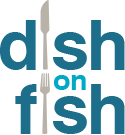
Macros. You’ve no doubt heard the term thrown around in conversation – perhaps at the gym or on the news – but you’re still not quite sure what it means or what the fuss is all about. Not to worry, because we’ve broken it down for you. Our “Macros 101” guide will help you understand what a macros diet is and how it relates to seafood in your diet.
The “macro diet” has been gaining popularity lately, especially with those who are looking to lose weight or who just wish to for better health. The premise of the diet is not to count calories, but to keep your macronutrient intake within a specific ratio (explained below).
What are macronutrients?
Macronutrients are the carbohydrates, proteins and fats in the foods you eat. (Micronutrients, on the other hand, are generally vitamins and minerals that are needed in much smaller amounts by the body.)
While each person’s nutrient needs are individualized, a basic macronutrient breakdown might look something like this:
- 45%-65% of your total daily calories from carbohydrates
- 10%-35% of your total daily calories from proteins
- 20%-35% of your total daily calories from fats
It’s important to keep in mind that your target ratios should be set according to your height, weight, physical activity level, age and health goals. While some apps and websites offer a rough idea of what the ratios should be, we recommend working with a registered dietitian to ensure you establish macro ranges that are healthy for your individual body, needs and goals.
What foods fit into the macro diet?
While tracking macronutrient ratios may sound similar to tracking calories, the macro diet places a lot of emphasis on the source of your food. The diet stresses eating whole, unprocessed foods to meet target macronutrient ratios. Here are some examples of macros diet-friendly whole foods to include:
- Carbohydrates – dark leafy greens, root vegetables, whole grains (e.g., oats, corn, brown rice, quinoa, sorghum, spelt, rye, whole wheat)
- Proteins – fish (such as salmon, pollock, trout, mackerel, sardines and cod), shellfish (such as shrimp, scallops and mussels), poultry, lean red meat, eggs, nuts/seeds
- Fats – olive oil, fatty fish, olives, avocados, nuts/seeds
And guess what seafood lovers: Because the macro diet focuses on eating whole foods, seafood is a no-brainer macro diet protein. In addition to providing large amounts of complete protein, seafood delivers B vitamins, vitamins D and A, zinc, iodine, iron, the antioxidant selenium and the heart-healthy omega-3 fatty acids DHA and EPA. Plus, seafood is generally a lower-calorie protein source, helping you meet your protein needs while consuming fewer calories than what you’d get from some other protein sources.
Thanks to its ample nutrients, seafood may help reduce the risk of heart disease, improve blood cholesterol levels, build muscles, lower the risk of depression, and boost brain and eye development in babies. It also may help our brain and eye functions as we age.
The macro tracking approach may or may not be your thing, but it’s always useful to have some background information that can help you make smarter food choices. As always, we are strong advocates of making informed food decisions and developing sound habits when it comes to physical activity and eating – especially when it comes to eating seafood!




No Comments